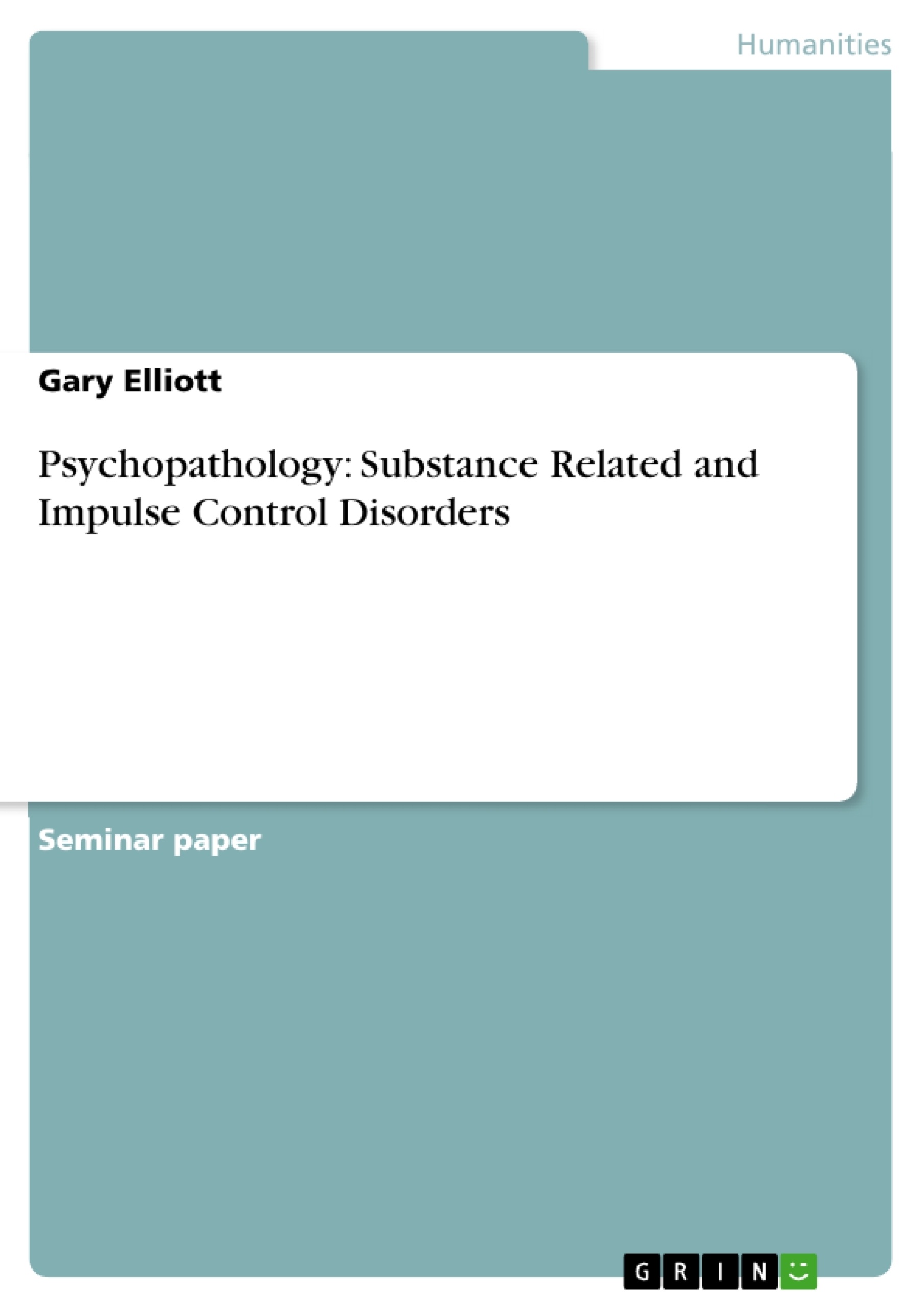The drugs mentioned in this paper each have their own specific effects on the user but they are similar in the manner in which they are used and the treatment used when working with the abuser.
A ‘substance’ is a chemical compound that alters behaviour or mood when ingested. This group includes alcohol, nicotine, caffeine, heroin and cocaine along with chocolate and soft drinks. The vast majority of users of the ‘safe’ drugs are not perceived as addicts, they can be equally as addictive and harmful to one’s health.
There is a clear distinction between a user and an abuser of drugs. ‘Substance use’ suggests that the individual ingests the drug in moderate amounts that have no significant effect on their social, educational or occupational functionality. The drug has the ability, based on the quantity ingested to create impaired judgement, mood changes and lowered motor ability; this result is referred to as intoxication. ‘Substance abuse’ as an extension of ‘use’ is really defined on how the use of the drug affects the individual’s relationships, his work or education and whether it causes him to place himself or others in physically dangerous situations (Barlow & Durand: 2005).
‘Drug dependence’ is often described as addiction. There is however some disagreement in how we best define substance dependence (Woody & Cacciola: 1997). One definition would explain how the individual requires systematically greater quantities of the drug to experience the same level of intoxication (tolerance), and will behave negatively if the drug is not ingested (withdrawal) (Franklin & Frances: 1999). An alternate view on substance dependence pertains to the behaviour that focuses on finding the required drug as a dependence indicator. A different view of substance dependence focuses on the drug seeking behaviour itself as an indication of dependence. The repetitive ingestion of the drug, an increased need for more of the drug and the likelihood that re-use of the drug will occur after a period of abstinence; are all behaviours that help to define the extent of the drug dependence. These behaviours have a psychological component and these in conjunction with physiological components of tolerance and withdrawal make for a better understanding of substance dependence.
Many people are able to ‘enjoy’ a glass of wine ...
Table of Contents
- Introduction
- Depressants
- Disorders related to alcohol use
- Disorders related to sedative, hypnotic or anxiolytic substances
- Stimulants
- Disorders related to amphetamine use.
- Disorders related to cocaine use
- Disorders related to nicotine use
- Disorders related to caffeine use.
- Opioids
- Hallucinogens
- Marijuana
- Other hallucinogens including LSD
- Other abused drugs
- Causes of substance-related disorders
- Biological factors.
- Psychological factors
- Cognitive factors
- Social factors
- Cultural factors.
- Substance related disorders treatment
- Biological treatment
- Psychosocial treatment.
- Prevention
- Impulse-Control Disorders
- Intermittent Explosive Disorder.
- Kleptomania
- Pyromania
- Pathological gambling.
- Trichotillomania.
Objectives and Key Themes
This paper aims to provide a comprehensive overview of substance-related and impulse control disorders, exploring their nature, causes, treatments, and prevention strategies. The focus is on providing an informed understanding of the impact of various substances on the individual and society, emphasizing the distinction between use and abuse.
- The definition and distinction between substance use, abuse, and dependence.
- The various categories of substances, their effects, and their potential for abuse.
- The biological, psychological, social, and cultural factors contributing to substance-related disorders.
- The different treatment approaches, both biological and psychosocial, for substance abuse and dependence.
- An overview of impulse control disorders, exploring their characteristics and potential treatment strategies.
Chapter Summaries
The introduction lays the groundwork by defining key terms like substance use, abuse, and dependence, highlighting the distinction between occasional use and problematic dependence. It further emphasizes the diverse nature of substances, ranging from legal substances like alcohol and caffeine to illicit drugs such as heroin and cocaine.
The following sections delve into specific categories of substances, exploring their effects, potential for abuse, and the associated disorders. These categories include depressants such as alcohol and benzodiazepines, stimulants like amphetamines and cocaine, opioids like heroin and morphine, hallucinogens like marijuana and LSD, and other abused substances.
The chapter on causes of substance-related disorders explores various contributing factors, including biological predispositions, psychological vulnerabilities, cognitive biases, social influences, and cultural norms. This section aims to provide a holistic understanding of the complex interplay of factors that can lead to substance abuse.
The section on substance-related disorder treatment delves into both biological and psychosocial interventions. It examines the use of medications to manage withdrawal symptoms and cravings, as well as various psychotherapeutic approaches, including cognitive-behavioral therapy and motivational interviewing.
The final chapter provides an overview of impulse control disorders, which are characterized by difficulties in controlling urges and impulses. It examines specific disorders like intermittent explosive disorder, kleptomania, pyromania, pathological gambling, and trichotillomania, exploring their characteristics, potential triggers, and treatment options.
Keywords
The key focus of this paper lies on substance-related disorders, encompassing various substances such as alcohol, nicotine, caffeine, heroin, cocaine, marijuana, and LSD. It explores the factors contributing to substance abuse, including biological, psychological, social, and cultural influences. The paper also examines different treatment approaches for substance dependence, including biological and psychosocial interventions. Additionally, it provides an overview of impulse control disorders, such as intermittent explosive disorder, kleptomania, pyromania, pathological gambling, and trichotillomania.
- Arbeit zitieren
- Gary Elliott (Autor:in), 2013, Psychopathology: Substance Related and Impulse Control Disorders, München, GRIN Verlag, https://www.grin.com/document/275084



